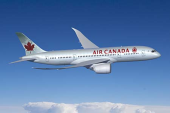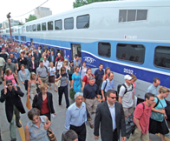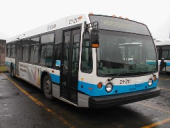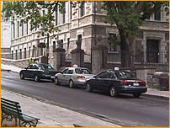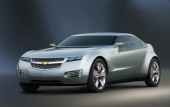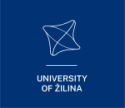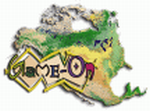
Conference Location

Location
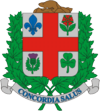 Montreal, or Montréal in French, is the second-largest city in Canada and the largest city in the province of Quebec. Originally called Ville-Marie ('City of Mary'), some historians think the city takes its present name from the Mont Réal (as it was pronounced in Middle French, or Mont Royal / Mount Royal in present French), the three-head hill at the heart of the city, whose name was also initially given to the island on which the city is located.
Montreal, or Montréal in French, is the second-largest city in Canada and the largest city in the province of Quebec. Originally called Ville-Marie ('City of Mary'), some historians think the city takes its present name from the Mont Réal (as it was pronounced in Middle French, or Mont Royal / Mount Royal in present French), the three-head hill at the heart of the city, whose name was also initially given to the island on which the city is located.
|
Montreal is located in the southwest of the province of Quebec. It rests on the Island of Montreal at the confluence of the Saint Lawrence and Ottawa Rivers. The port of Montreal lies at one end of the Saint Lawrence Seaway, which is the river gateway that stretches from the Great Lakes into the Atlantic Ocean. Montreal is bordered by the St. Lawrence river on its south side, and by the Rivière des Prairies on the north. |
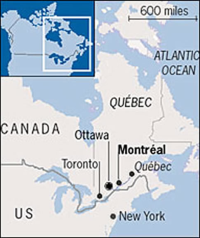
|
History
Archeological evidence suggests that various nomadic native peoples had occupied the island of Montreal for at least 2,000 years before the arrival of Europeans. With the development of the maize horticulture, the St. Lawrence Iroquoians established the village of Hochelaga at the foot of the Mount Royal. The French explorer Jacques Cartier visited Hochelaga on October 2, 1535, claiming the St. Lawrence Valley for France. Seventy years later, French explorer Samuel de Champlain reported that the St. Lawrence Iroquoians and their settlements had disappeared altogether from the St. Lawrence valley, likely due to inter-tribe wars, European diseases, and out-migration. Champlain established in 1611 a fur trading post on the Island of Montreal, on a site initially named La Place Royale, at the confluence of Saint-Pierre river and St-Lawrence river, where present-day Pointe-à -Callière stands.
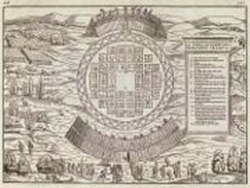
|
In 1639, Jérôme Le Royer de La Dauversière obtained the Seigneurial title to the Island of Montreal in the name of the Société de Notre-Dame de Montréal to establish a Roman Catholic mission for evangelizing natives. Ville-Marie, the first permanent French settlement on the Island, was founded in 1642 at Pointe-à -Callière. Complementing its missionary origins, Ville-Marie became a centre for the fur trade and a base for further French exploration in North America. |
|
The bloody French and Iroquois Wars would threaten the survival of Ville-Marie until a peace treaty was signed at Montreal in 1701. Ville-Marie remained a French colony until 1760, when Pierre François de Rigaud, Marquis de Vaudreuil-Cavagnal surrendered it to the British army under Jeffrey Amherst during the French and Indian War. The Treaty of Paris in 1763 ended the Seven Years' War and ceded eastern New France to the Kingdom of Great Britain. American Revolutionists under General Richard Montgomery briefly captured the city during the 1775 invasion of Canada. |
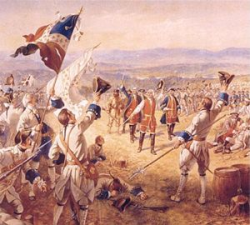
|
Montreal was incorporated as a city in 1832. The opening of the Lachine Canal permitted ships to bypass the unnavigable Lachine Rapids, while the construction of the Victoria Bridge established Montreal as a major railway hub. These linked the established Port of Montréal with continental markets and spawned rapid industrialization during the mid 1800s. By 1860, it was the largest city in British North America and the undisputed economic and cultural centre of Canada. Montreal was the capital of the Province of Canada from 1844 to 1849, but lost its status when a Tory mob burnt down the Parliament building to protest passage of the Rebellion Losses Bill.
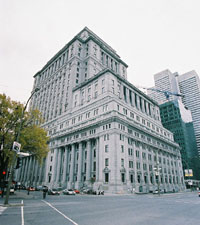
|
After World War I, the Prohibition movement in the United States turned Montreal into a haven for Americans looking for alcohol. Montreal became known as Sin City, due to the abundance of alcohol and burlesque shows, unrivaled in North America at this time. Unemployment remained high in the city, and was exacerbated by the Stock Market Crash of 1929 and the Great Depression. Canada began to recover from the Great Depression in the mid-1930s, when skyscrapers such as the Sun Life Building began to appear. |
|
After Montreal's population surpassed one million in the early 1950s, Mayor Jean Drapeau laid down plans for the future development of the city. These plans included a new public-transit system and an underground city, the expansion of Montreal's harbour, and the opening of the Saint Lawrence Seaway. Tall, new buildings replaced old ones in this time period, including Montreal's two tallest skyscrapers up to then: the 43-storey Place Ville-Marie and the 47-story Tour de la Bourse. Two new museums were also built, and in 1966, the Montreal Metro system opened, along with several new expressways. The city's international status was cemented by Expo 67 and the 1976 Summer Olympics. During the 1980s and early 1990s, Montreal experienced a slower rate of economic growth than many other major Canadian cities. By the late 1990s, however, Montreal's economic climate had improved, as new firms and institutions began to fill the traditional business and financial niches. As the city celebrated its 350th anniversary in 1992, construction began on two new skyscrapers : 1000 de La Gauchetière and 1250 René-Lévesque. Montreal's improving economic conditions allowed further enhancements of the city infrastructure, with the expansion of the metro system, construction of new skyscrapers and the development of new highways including the start of a ring road around the island. |
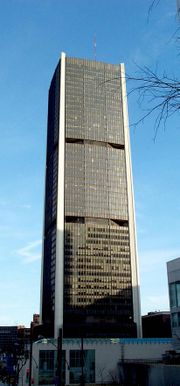
|
In 2006, the city was recognized by the international design community as a UNESCO City of Design, one of the three world design capitals.
Old Montreal

One of the highlights as a tourist to Montreal is Old Montreal (or Vieux-Montréal in French) which is, the oldest area in the Canadian city of Montreal, dating back to New France. It is a major tourist draw; with the oldest of its buildings dating to the 1600s, being one of the oldest urban areas in North America. Located in the borough of Ville-Marie, the area is usually thought of as being bounded to the west by McGill St., to the north by Saint Antoine St., to the east by Berri St., and to the south by the Saint Lawrence River.

Parts of this text were copied from 
Conference Venue
 The GAMEON-NA'2008 conference will be held at McGill University, which is a public co-educational research university located in Montreal, Quebec, Canada. Its main campus is set upon 320,000 square metres (80 acres) at the foot of Mount Royal in Montreal's downtown district. A second campus—Macdonald Campus—is situated on 6.5 square kilometres (1,600 acres) of fields and forested land in Sainte-Anne-de-Bellevue, 30 kilometres west of the downtown campus. It is located as close to the center of downtown Montreal as any landmark can get. The address at the main gates is 845 Sherbrooke St. West. Be careful.. Sherbrooke is a very loooong street and expands in both ways outside of the downtown area. Here is a very helpful map of area surrounding the main campus which could also be used for directions.
The GAMEON-NA'2008 conference will be held at McGill University, which is a public co-educational research university located in Montreal, Quebec, Canada. Its main campus is set upon 320,000 square metres (80 acres) at the foot of Mount Royal in Montreal's downtown district. A second campus—Macdonald Campus—is situated on 6.5 square kilometres (1,600 acres) of fields and forested land in Sainte-Anne-de-Bellevue, 30 kilometres west of the downtown campus. It is located as close to the center of downtown Montreal as any landmark can get. The address at the main gates is 845 Sherbrooke St. West. Be careful.. Sherbrooke is a very loooong street and expands in both ways outside of the downtown area. Here is a very helpful map of area surrounding the main campus which could also be used for directions.
|
McGill has 21 faculties and professional schools and offers degrees and diplomas in over 300 fields of study. The university also has field research stations in Mont-Saint-Hilaire and Schefferville, Quebec; Axel Heiberg Island in Nunavut; and Holetown, Barbados. McGill was founded in 1821 from a bequest by James McGill, a prominent Montreal merchant, who left an endowment in addition to the property on which the university now stands. McGill would become the first non-denominational university in the British Empire. |
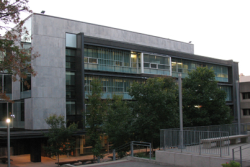
The conference itself will be held at the Lorne M. Trottier Building of McGill University. Follow this link to find the building on the McGill campus.
Trottier Building
3630 University Street
Montreal, Quebec H3A 2B2
 Tel:
Tel:
 Fax:
Fax:
 E-Mail:
E-Mail:
How to get to Montreal and the Conference Location 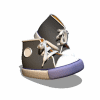
By Plane
|
When arriving by plane in Montreal, you will land at the Montreal Trudeau Airport. The airport is located 15 miles (24km) west of Montréal. Transfer to the city: There is an airport shuttle bus service into the centre of Montreal and to the major downtown hotels. The shuttle bus also transfers passengers between Montréal-Mirabel and Montréal-Trudeau airports, taking about 45 minutes. Taxis are also readily available. Car rental: Alamo, Avis, Budget, Hertz, National and Thrifty are represented on site. Facilities: The Departures level offers ATMs and bureaux de change as well as duty-free and other shops. A variety of restaurants, bars and cafes, and shops are available on both levels and wireless Internet access is available from anywhere in the terminal. Parking: Short-term parking is adjacent to the airport, long-term is a few minutes away and is served by a regular shuttle bus. Valet parking is also available; the reception area is next to the terminal. Departure tax: None. Contacts: Tel: +1 (514) 394 7377. The other airport you might arrive at is Mirabel. See its location here. To survive your airport adventure. Follow this link. |
By Train
|
If you come by train from elsewhere in Canada or from the East-Coast of the US, then follow this link. For information on local commuter trains follow this link. A map of the main lines can be downloaded here. |
By Metro
|
If you are planning to use public transport, you will want to get off at McGill metro station. The fee for adults is $2.50 for both the bus and metro. Keeping your transfer on the bus will allow to switch onto the metro (subway) system for free. Metro transfers also allow you to switch onto the bus. Both transfers are only valid for a limited time. The STM website might help you plan your trip, particularly their trip planner service. You can find more information about the Montreal metro here and here. If you wish to visit Montreal just by metro then you can go here. You can also download the metro map here. Another very extensive subway map is linked here. |
By Bus
|
The STM bus network consists of 169 daytime and 20 nighttime service routes. To obtain planned service schedules, route maps, or to find your stop's code number, select a bus route in the section below. You can also consult the Planibus schedules online. If you need help to plan a trip, try Tous Azimuts our trip planner. |
By Taxi
|
If you want to book a taxi then follow this link. For limo service you can use this link. |
By Car
|
If you are driving, it is recommended that you leave your car at your hotel to avoid driving in the city. This is of course assuming that your hotel is within walking distance. If you are forced to drive into the city, then you can park on the main campus itself for a cost of 3$/hour during 6h00 - 17h00 (14$ daily maximum) and 7$ for evenings (entry between 17h00 and 23h00, exit before 6h00). Parking in the city costs 1$ per hour before 18h00 and is free afterwards, but most parking meters only hold 2 hours worth of paid parking time. If you plan to park on campus, you should be aware of the campus parking regulations. |
Montreal Maps
A number of Montreal Maps are featured here. If you want to see some more maps follow this link.
BEWARE

When you bring your PC or other equipment to CANADA be aware that different plugs are needed.
- That your VISA requirements are OK. See the Fees Page for more information.
Useful links
- Montreal Weather
- Montreal City Guide
- Montreal Travel Guide
- Montreal Travel
- New York Times Travel-Montreal
- I-Fly Com Dorval Airport
- Lonely Planet Montreal
- Montreal Business Kit
- Montreal Tourism and Travel
- Montreal Public Transport
- Virtual Tourist Guide to Montreal
- World 66-Montreal
- Discover Montreal
- Restaurant Guide to Old Montreal

